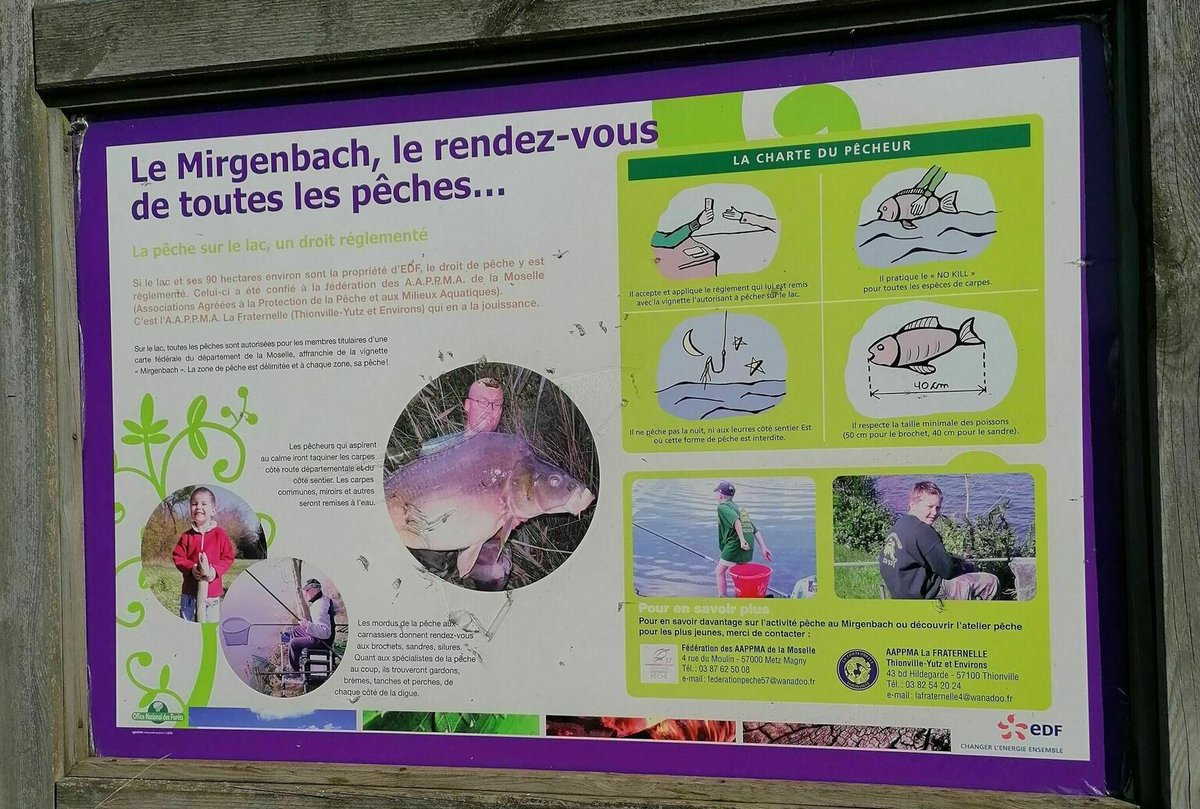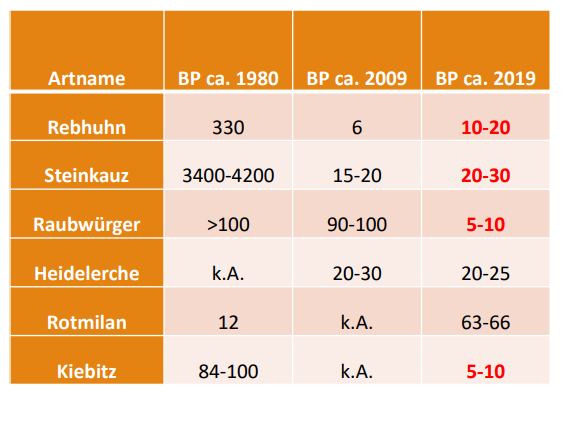
Thread. I was born close to one of France's largest nuclear power plants, Cattenom: a "normal" landscape for local residents since its opening in 1985. ☢️The plant needs a huge amount of cooling water, so an artificial reservoir was created. But how is biodiversity impacted? 1/n 

2/n The Mirgenbach lake (7.3 million m3) is a unique ecosystem. Despite being in a cold region (we frequently get -15°C), winter water temp never gets <12°C, meaning that organisms don't behave as in surroundings lakes. Fishing is permitted, as are other activities (windsurf..) 

3/n Biodiversity has been extensively studied. While the site is a hotspot for birds (especially migrators as it is so warm in winter), the situation is slightly more contrasted in other groups. Fish or plant diversity for example is affected by temperature. 

4/n Due to high winter temperatures, fish adopt an unusual, almost tropical reproductive cycle in the cooling reservoir. Species diversity is lower - but this is also due to the lake being isolated from other water bodies 

5/n Interestingly, high temps are also causing unique challenges: in the late 1980s, the plant's manager EDF were forced to pay companies to remove hundreds of tons of an usual algae for the area, Hydrodiction reticulatum - which was then used in cosmetics. 



6/n a common question that often arises is radioactivity and how it impacts biodiversity. While some is released in the water, temperature & other chemicals have a bigger impact: copper from pipes for example, or chlorine used in disinfection... 

7/n While water temperature is strongly affected, air temperature of the surroundings much less. There was a lot of green growth in the area today, perhaps more than around other lakes in the area. Nice to see Heath Groundsel, Bitter Vetch and Biting stonecrop, plus lots of fungi 







8/n Unfortunately, that extra heat is also encouraging invasive plants: narrow-leaved Ragwort (Senecio inaequidens) was still flowering profusely today around the cooling reservoir, as was Erigeron annuus 



9/n The reservoir mainly acts as a cooling buffer, ensuring the local river, the Moselle doesn't get heated up significantly. But how will that hold on to climate change? This is a burning question for many nuclear plants in France... 

10/n The lake in Cattenom increasingly has to be closed to the public for extended periods in summer because low water levels means concentrations of chemicals get too high to guarantee public safety. 

11/n The power plant is a tricky topic, especially as it's so close to Luxembourg/Germany (both keen for it to be closed). In the area, residents are divided, as are politicians. It employs around 1200 people & has a relatively low "direct" impact (except...clouds!) 

12/n The "low carbon electricity" argument is hard to deny. But the nuclear waste problem is very real. The sleepy little village of Bure in nearby Meuse was chosen as an underground storage site - but this is met with huge tension reuters.com/article/uk-fra… 

13/n There are also various incidents, and the spectrum of Tchernobyl, esp. as the plant's running period was extended over its 40 year planned life. 🇱🇺 & 🇩🇪 are independently monitoring the environment in the area, putting pressure on the 🇫🇷 government. delano.lu/article/delano… 

14/n As an environment professional, I have a highly ambivalent opinion on nuclear energy. The iodine tablets residents receive are a stark reminder that things could go very wrong at any time. Most of Western/Central Europe would probably be affected. 

15/n On the other hand, the sight of wind turbines popping like mushrooms in nearby Germany makes me uneasy. Significant raptor mortality (esp Red Kite) has been reported on the French side, forcing turbines to be stopped for extended periods..but not in 🇩🇪lorraine-association-nature.com/actu-360.html 

16/n There are of course, other issues linked to wind farms, with a diffuse rather than concentrated impact, from concrete bases to rare-earth magnets. To replace Cattenom, the number of turbines needed is estimated to be at least 2,000. That is *a lot*. 

17/n The arguments of windfarm landscape and health impacts are very strong in France - legal proceedings are numerous. Nuclear has been present for decades and hasn't changed much over that period of time (the footprint of Cattenom, 400ha, is roughly what it was in the 1980s). 



18/n Politically, it is a sensitive topic. Green parties tend to be vehemently against and call for a "nuclear exit". Other parties often point out the role of nuclear power in the production of low carbon energy. Macron is pushing for the construction of smaller, "safer" plants. 

19/n Who is right? As with all technologies, I think it will take time to fully understand the impacts of wind/nuclear on the environment. Of course we should be striving to reduce our energy needs, but with the boom in electric cars, this is unlikely to happen. 

20/n Where does that leave me (and other environmentalists who may not speak up as it can make one unpopular among "green" crowds)? I genuinely think nuclear has a place in energy production - perhaps in a different form than currently. Can we improve waste management? 

21/n A common argument is that we are simply "displacing the problem for future generations to deal with" by burying nuclear waste. But by not acting as fast possible to reduce carbon emissions, aren't we leaving future generations with an even bigger problem? 

22/n I'll stop ranting now - but can't resist finishing this thread with a seasonal wind turbine cartoon. Merry Christmas! 🙃 

• • •
Missing some Tweet in this thread? You can try to
force a refresh



















